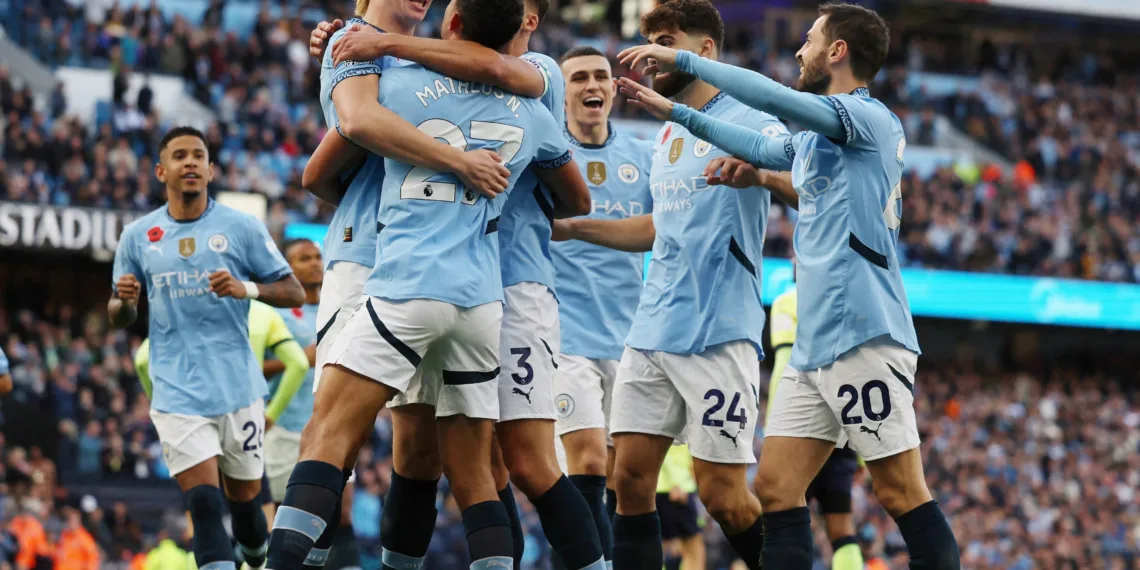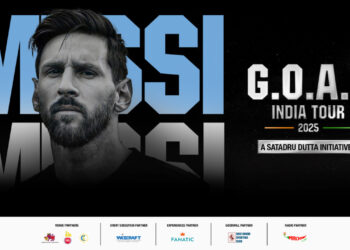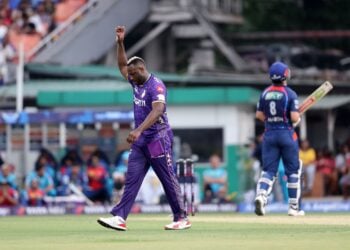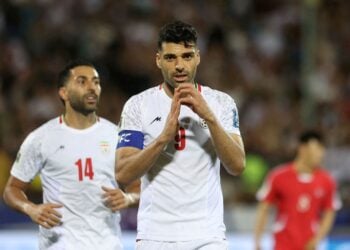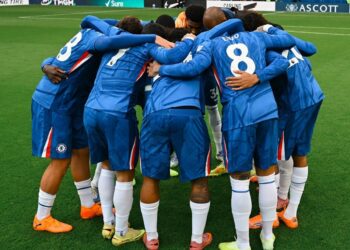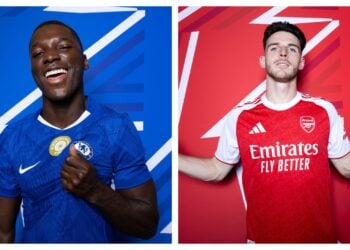Manchester City find themselves on the verge of a crisis, arguably the most precarious situation they’ve faced during Pep Guardiola’s tenure. But just how serious is the situation, and what steps must they take to restore their campaign?
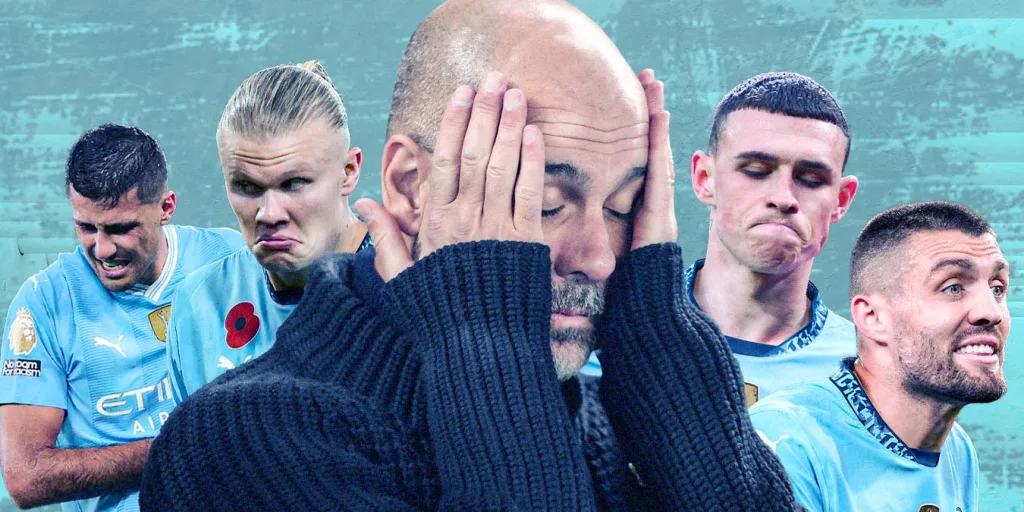
Table of Contents
Manchester City’s Struggles: Are They Facing a Crisis?
Manchester City are currently far from the Premier League summit and only have a shot at winning three trophies this season, signaling a club in crisis.
Though it’s still early to completely dismiss the season, this is arguably the closest Pep Guardiola has come to a full-blown crisis at City in recent years. The club is experiencing their first four-match losing streak of Guardiola’s career, with City losing four consecutive games for the first time since Stuart Pearce’s tenure in 2006. This raises questions about whether the reigning champions are still the formidable force they were last season.
At present, they are five points behind Liverpool at the top of the table, eliminated from the EFL Cup, and have secured just two wins from four matches in the UEFA Champions League. Throughout their current losing streak, they have squandered leads twice and gone two goals behind on two occasions without managing to recover.
However, all hope is not lost. Guardiola won’t be overly concerned about the EFL Cup exit to Tottenham, as he previously dismissed the competition as a “waste” of time. The new Champions League group-stage format is quite lenient, meaning City still have four matches to make up the two-point deficit to secure automatic qualification for the knockout stages. The Opta supercomputer still gives them an 87.3% chance of progressing, and they remain the favorites to win the competition.
The two Premier League losses – at Bournemouth and Brighton – are more concerning for Guardiola, but City have recovered from larger gaps at the top of the table in the past, and they will know that Liverpool will eventually experience a dip in form. With injury problems potentially easing following the international break, and a return to home turf this weekend after their four away defeats, there may be a glimmer of hope for City.
However, they face a challenging stretch in the five weeks leading up to Christmas, with fixtures against Liverpool, Aston Villa, surprise package Nottingham Forest, and rivals Manchester United in December. Before all of those, they must face their bogey team Tottenham this weekend.
City have only won two of their last five home encounters with Spurs, who managed a 3-3 draw at the Etihad last season despite being in the midst of a severe injury crisis. Ben Davies and Emerson Royal were filling in at centre-back, and the now-departed Giovani Lo Celso and Bryan Gil started in midfield, yet they still managed a draw against the eventual champions. This match serves as a classic example of a bogey team.
So, how can City reverse their slump, if we are at that stage? Here are the main challenges currently hindering the reigning champions.
Guardiola’s Small Squad Strategy: Has It Backfired?
Pep Guardiola has always favored a smaller squad. He prefers not to have too many players on the bench without sufficient game time to stay sharp.
“When you have 20 players and six injuries, people say you should have a bigger squad, but what happens when I don’t have injuries? How do I manage that?” he explained in September of the previous year. “To be effective, players need to start regularly.”
While some have always questioned this strategy, Guardiola’s remarkable achievement of four consecutive Premier League titles suggests he knows exactly what he’s doing. Last season, they clinched the title with just 25 players, the fewest of any Premier League club. Out of those 25, five players (James McAtee, Cole Palmer, Aymeric Laporte, Sergio Gómez, and Kalvin Phillips) combined for just 160 minutes of playing time. Gómez was the only one who spent the entire season at City.
Throughout the past seasons, critics have wondered how City would cope with a full-blown injury crisis that never came. Everything seemed fine.
However, this season, it seems their luck has run out.
“If next season I know I will have 7-8 players injured, then I need a bigger squad,” Guardiola acknowledged earlier this month. “It’s impossible to compete for titles with that many injuries, literally impossible, because human beings have limits.”
One could argue he should have planned for this eventuality. Some of us pointed out before the season started that City might regret not strengthening in specific key positions. At the time, we thought that not bringing in a backup striker for Erling Haaland after Julián Alvarez’s departure could be their biggest problem. In hindsight, that concern has turned out to be the least of their issues.
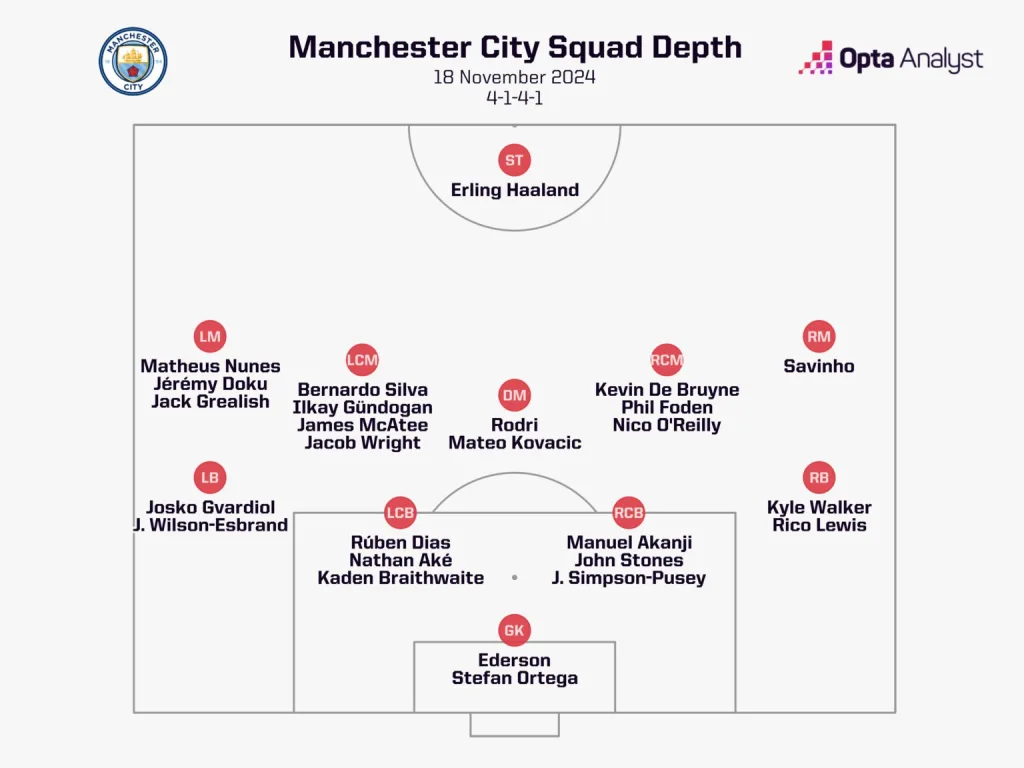
City are now stretched thin in central midfield without Rodri, and with Matheus Nunes seemingly converted to a winger. In central defense, where they appeared well-covered at the season’s outset, Guardiola has had to rely on 19-year-old Jahmai Simpson-Pusey in three of the last four matches.
Guardiola has always managed his compact squad by rotating frequently, ensuring players stay fresh, fit, and sharp through consistent changes to the starting lineup. This trend has continued this season, with only Ipswich and Bournemouth (27 each) making more alterations to their starting XI than City (26).
However, many of these rotations have not been by choice. In recent weeks, his defensive selections have been based on availability rather than preference, and his substitutes often include players who aren’t fully fit to play. For instance, Kevin De Bruyne would likely have featured in the loss to Bournemouth if he had been available, while Nathan Aké and Manuel Akanji stayed on the bench against Brighton despite Simpson-Pusey’s struggles.
Has Guardiola’s reliance on a small squad finally come back to haunt him?
Overreliance on Haaland’s Goal-Scoring Ability
Having the world’s best goalscorer leading the attack is undoubtedly a luxury, but lately, City have become overly dependent on Haaland.
He remains the Premier League’s top scorer with 12 goals in 11 matches, but after an explosive start to the season—scoring 10 goals in his first five games—he has only netted twice in his last six. His recent goal drought has naturally aligned with City’s declining form, highlighting the team’s reliance on his scoring abilities, especially as there seems to be no one else capable of stepping up to fill the gap.
At the same stage last season, Haaland had 11 goals in 11 games but was supported by a formidable attacking force, including Alvarez (four goals), Bernardo Silva (three), Phil Foden (three), and Jérémy Doku (two).
This season, however, City’s top scorers outside of Haaland are center-backs Josko Gvardiol (three goals) and John Stones (two, both from 90th-minute set-piece situations), and defensive midfielder Mateo Kovacic (three). De Bruyne, Doku, Foden, Silva, Savinho, Jack Grealish, and Ilkay Gündogan have combined for just two goals.
Moreover, Kovacic, City’s second-highest scorer, ranks second for shots taken (20), which isn’t exactly the role he was brought in to fulfill. Part of the issue lies in the fact that several attacking midfielders have struggled with injuries, but even with Bernardo Silva being fit all season, he has taken 17 shots without scoring—making him the player with the most shots without a goal in the entire league. Savinho and Foden are not far behind, each having taken 15 shots with no goals to show for it.
Haaland certainly needs his teammates to start delivering more to take some of the burden off him.
Weakness in the Centre
Losing the world’s best player (as per the Ballon d’Or, if that’s your benchmark) from the core of your team is always a tough blow. While we’ve long known how crucial Rodri is to Manchester City, the past few weeks have made his importance even more apparent.
City initially seemed capable of coping without the Spanish midfielder, managing to win six of their first seven matches after his ACL injury in September. However, their defensive frailty in the centre has been repeatedly exposed in recent weeks.
Even before Rodri’s injury, City showed signs of vulnerability, conceding first at home to both Ipswich and Brentford, and failing to keep a clean sheet at West Ham.
What’s most alarming is how easily opposition teams are cutting through the middle of the pitch, creating clear goal-scoring opportunities. A staggering 39.1% of City’s opponents’ chances are being generated through the middle third, the second-highest in the league, only behind Tottenham (42.3%).
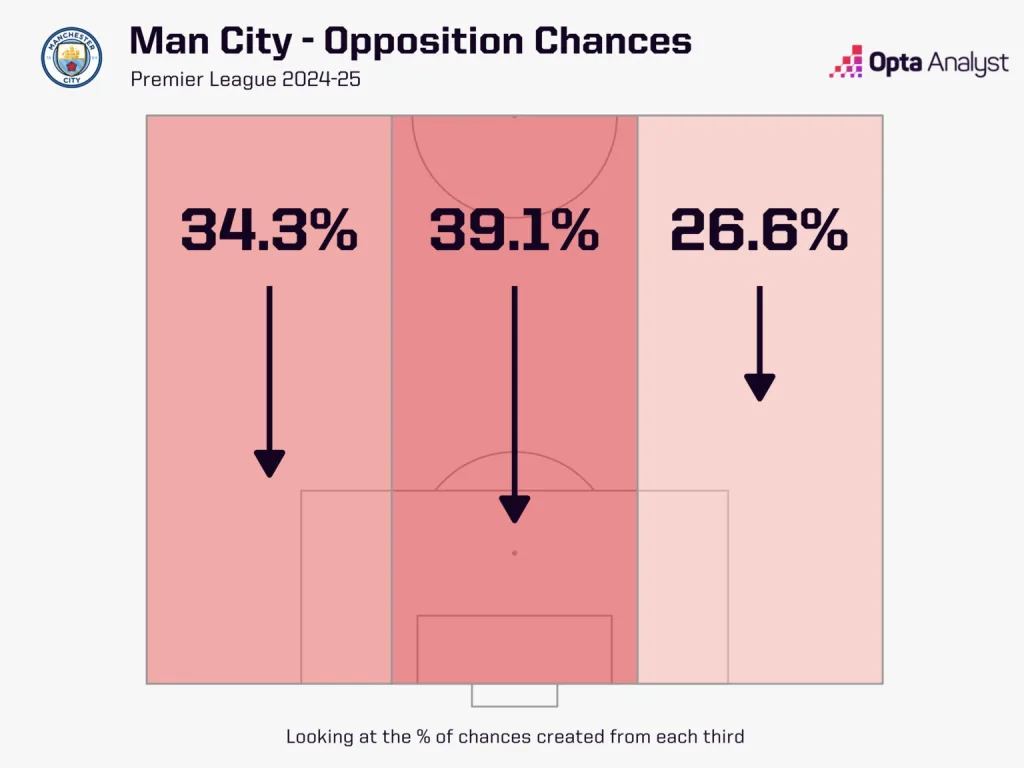
City are also giving up high-quality chances. The average expected goals (xG) value for each non-penalty shot they’ve allowed is the highest in the league, sitting at 0.15 xG per shot.
In contrast, the other top four teams in the current standings – Chelsea (0.09 xG per shot conceded), Liverpool (0.09 xG), Arsenal (0.08 xG), and Nottingham Forest (0.07 xG) – are the best in this aspect. Limiting opponents to low-quality chances is crucial for success, and City’s current rate is arguably unsustainable.
Moreover, City are conceding counter-attacks at a higher rate than usual, facing 0.91 shots per game from opposition breaks, which is nearly 50% more than in any other season over the past five years.
Need for Reinforcements in Midfield
With Rodri likely out for the season and the current defensive midfielders struggling to fill his shoes, it wouldn’t be surprising if Guardiola looks to bring in a new signing this January.
The challenge, however, lies in the fact that Rodri will eventually return, and there’s no scenario where he won’t reclaim his spot in the starting lineup. This means any new signing would either need to be capable of playing alongside Rodri or be willing to serve as his backup next season. Finding someone who can meet these requirements while also being good enough to immediately strengthen the starting XI is a difficult task.
There’s a lot to address, but Manchester City have a history of thriving under doubt, and they won’t back down in their pursuit of a fifth consecutive title.
Read More: Kevin De Bruyne to San Diego FC? MLS’s New Franchise Eyes a Blockbuster Move
FAQs
What’s causing Manchester City’s current struggles this season?
City’s struggles are due to injuries, a lack of depth in key positions, and overreliance on Haaland for goals, while also facing defensive vulnerabilities.
Is Pep Guardiola’s small squad philosophy backfiring?
Yes, with key injuries to players like Rodri and the lack of a reliable backup striker, Guardiola’s preference for a smaller squad has been tested.
Can Manchester City still turn around their season?
While in a tough spot, City can recover with injuries easing and a favorable home run, though their upcoming fixtures against top teams will be crucial.
How does Manchester City’s defensive record compare to other Premier League clubs?
City is conceding high-quality chances at the highest rate in the league, with defensive issues being a key factor in their recent slump.

